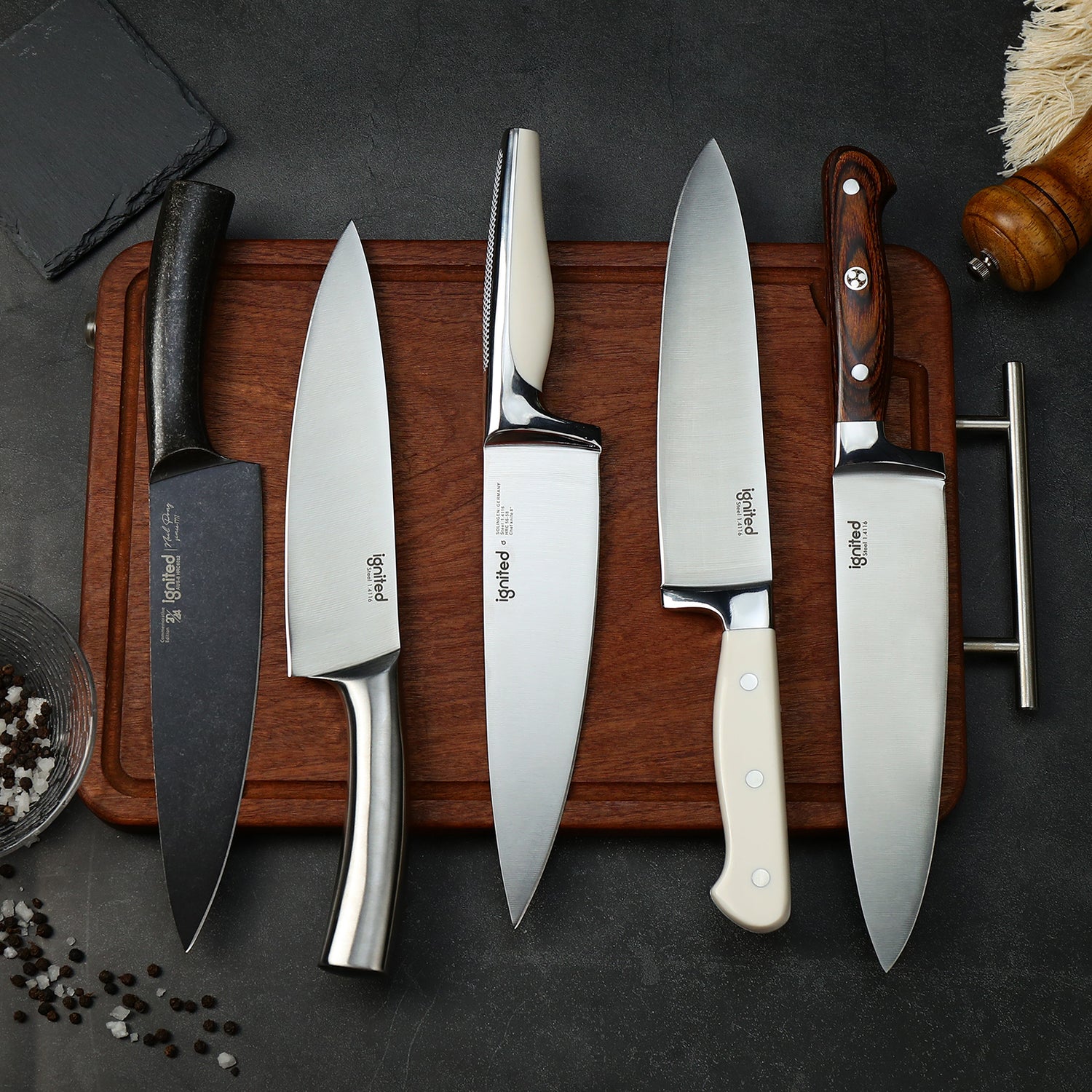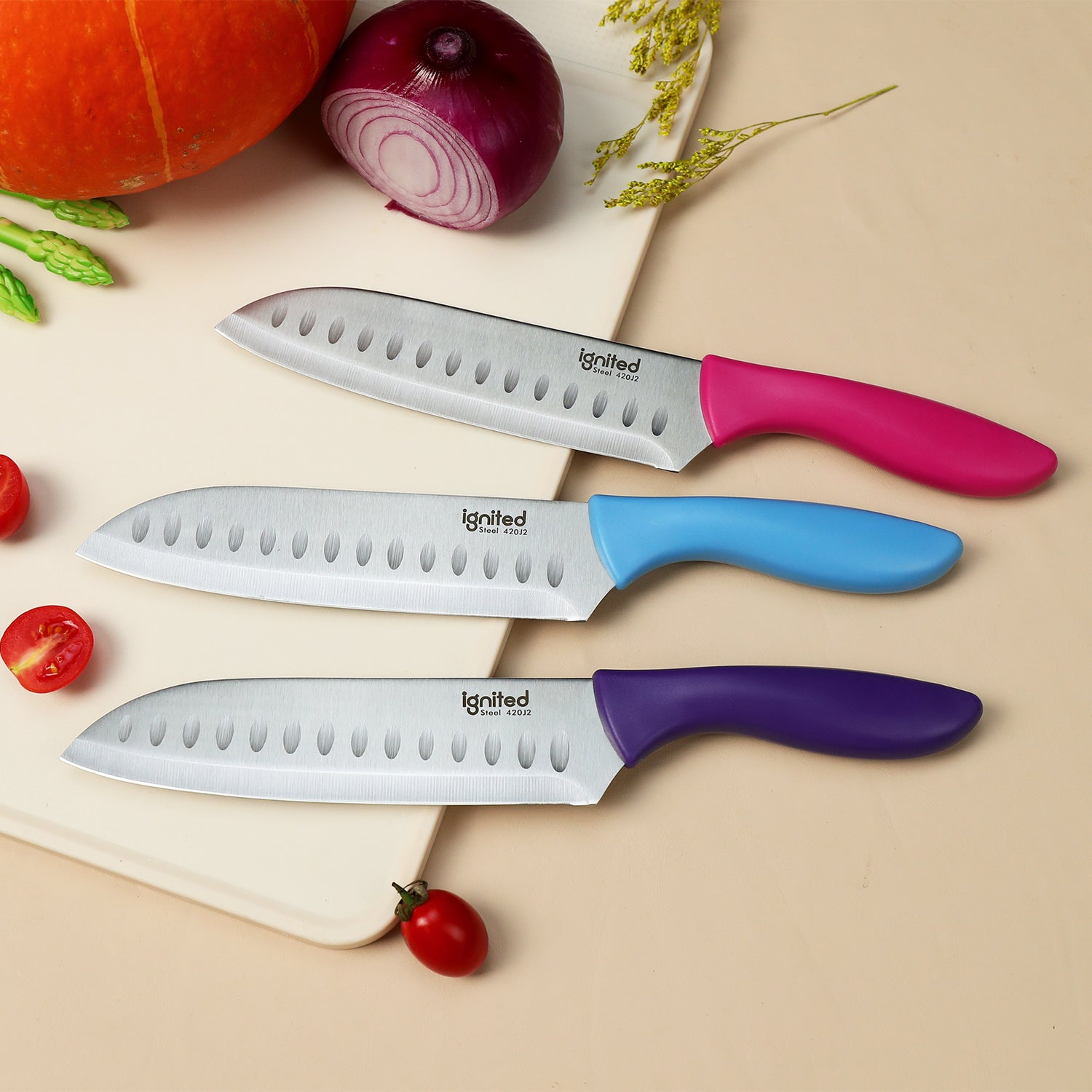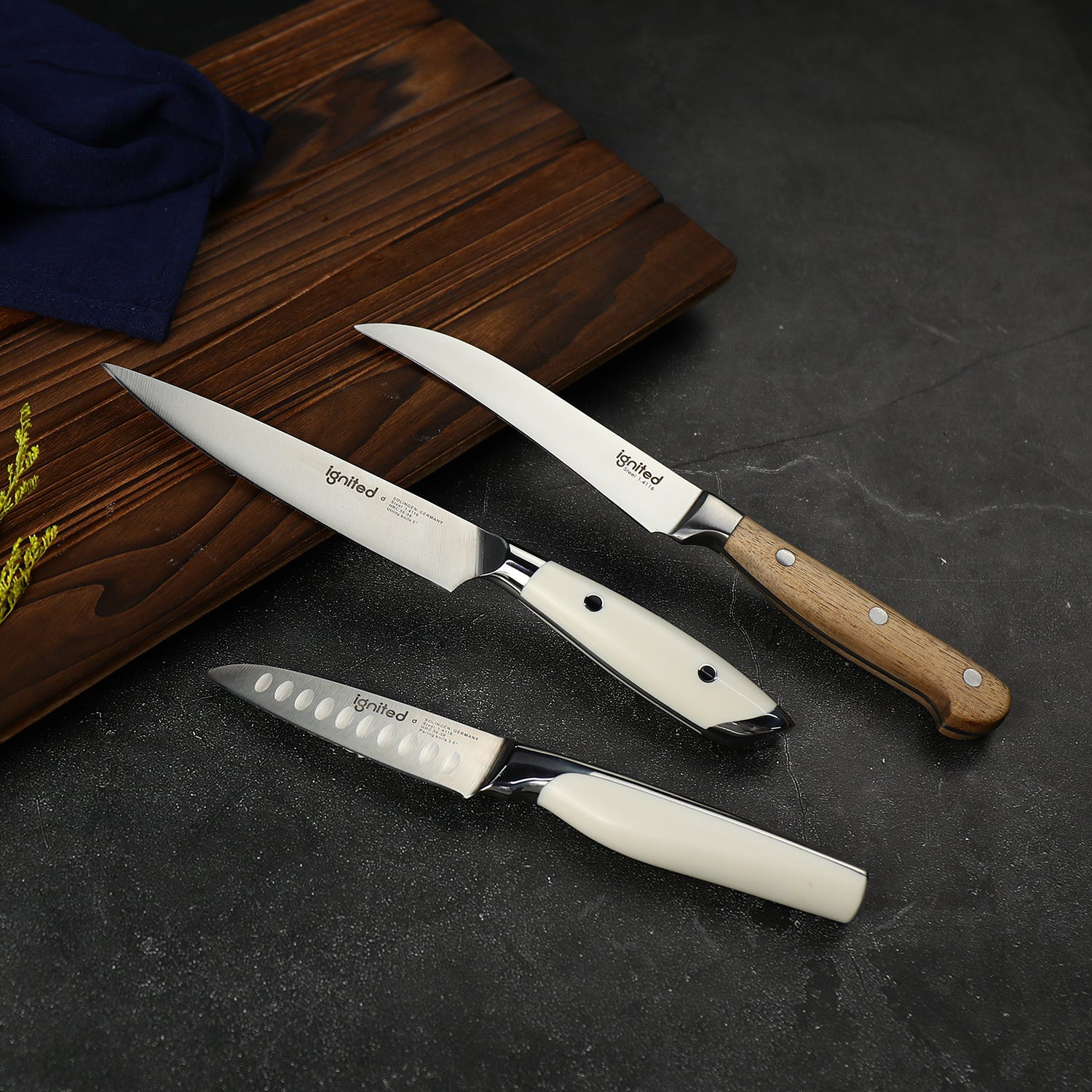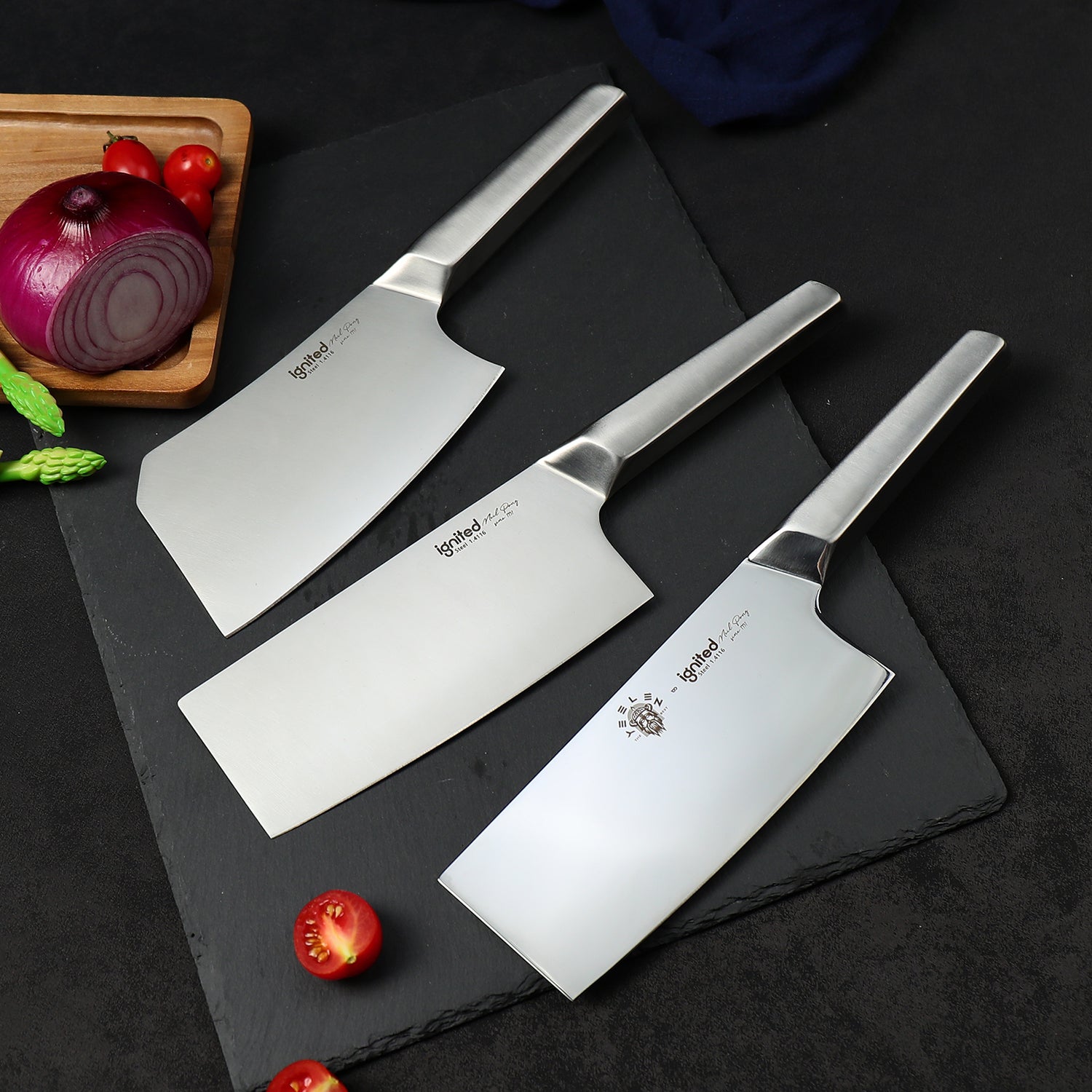A great kitchen knife isn't just a tool — it's your partner in every recipe. Whether you're a beginner or a seasoned chef, using knives from trusted brands can make all the difference in precision, comfort, and confidence. In this guide, Ignited Cutlery explores the top kitchen knife brands that professionals and home cooks rely on, and what sets them apart in 2025.
What Makes a Great Kitchen Knife Brand?
- Steel Quality: High-carbon or Japanese steels maintain sharpness and resist rust.
- Craftsmanship: Precision forging and heat treatment ensure durability and performance.
- Ergonomics: A balanced handle and blade reduce fatigue and increase control.
- Brand Reputation: Trusted by professionals, supported by decades (or centuries) of heritage.
- Customer Support: Warranties, sharpening services, and responsive help make a big difference.
Top Kitchen Knife Brands You Can Trust
1. Wüsthof (Germany)
Wüsthof has over 200 years of German knifemaking heritage. Their Classic series features full-tang, forged blades that are durable and well-balanced—ideal for everyday tasks.
- Pros: Excellent edge retention, ergonomic handles, long-term durability.
- Cons: Heavier than Japanese knives, premium pricing.
2. Shun (Japan)
Known for elegant Damascus steel and hand-hammered finishes, Shun knives are lightweight and razor-sharp. Made in Seki City, they combine traditional Japanese craftsmanship with modern design.
- Pros: Stunning aesthetics, incredibly sharp, lightweight.
- Cons: Prone to chipping, requires careful maintenance.
3. Victorinox (Switzerland)
The makers of the Swiss Army Knife also offer great kitchen knives. The Fibrox Pro line is known for comfort, utility, and affordability—perfect for beginners and professionals alike.
- Pros: Outstanding value, easy maintenance, slip-resistant grip.
- Cons: Less aesthetic appeal, stamped construction.
4. Global (Japan)
Famous for their sleek, all-steel construction, Global knives are hygienic, ultra-sharp, and ideal for quick, precise work.
- Pros: Lightweight, modern design, easy to clean.
- Cons: Unusual handle shape, regular honing needed.
5. Miyabi (Japan)
Miyabi blends Japanese artistry with German engineering. Their handcrafted knives feature layered steel, ice-hardening, and graceful geometry—perfect for delicate prep work.
- Pros: Premium craftsmanship, exceptional sharpness, elegant finish.
- Cons: High price, fragile if misused.
6. Zwilling J.A. Henckels (Germany)
With centuries of experience, Zwilling produces durable forged knives that perform reliably in both home and professional kitchens. Their Four Star and Pro lines are especially popular.
- Pros: Versatile, great edge retention, broad product range.
- Cons: Slightly heavier, carbon steel needs care.
7. MAC (Japan)
MAC knives are widely loved for their hybrid blade shape, allowing precise slicing and hearty chopping alike. The MTH-80 is a favorite among chefs worldwide.
- Pros: Incredibly sharp, well-balanced, versatile.
- Cons: Less widely available, premium cost.
8. Misen (USA)
Misen knives combine Japanese steel with modern affordability, offering chef-level quality to everyday cooks. They’re a great starter option without compromising performance.
- Pros: Affordable, sleek design, sharp right out of the box.
- Cons: Limited knife options, less refinement than legacy brands.
9. Kikuichi (Japan)
With over 700 years of history, Kikuichi produces some of the most refined blades in the world. Their knives are ideal for culinary artisans who value performance and legacy.
- Pros: Legendary craftsmanship, sharpness, and beauty.
- Cons: Expensive, not easy to find.
How to Choose the Right Knife Brand for You
- Cooking Style: Do you favor finesse or force? Precision slicing or power chopping?
- Maintenance Level: Some blades (like Shun or Miyabi) require more upkeep than others.
- Weight Preference: Heavier German blades vs. nimble Japanese steel.
- Budget: There are high-end, mid-range, and value brands for every cook.
Care and Maintenance Tips
- 🧼 Hand Wash Only: Dishwashers can ruin both edge and handle.
- 🔪 Use the Right Board: Stick to wood or plastic—avoid glass or stone.
- 📏 Hone Regularly: A honing rod helps retain alignment between sharpenings.
- 🧱 Sharpen as Needed: Use a whetstone or professional service every few months.
- 📦 Store Safely: Magnetic strips, blade guards, or knife blocks protect your investment.
FAQ: Top 5 Questions About Kitchen Knives
- 1. What is the most versatile kitchen knife to own?
- The chef’s knife (or gyuto in Japanese knives) is your all-purpose workhorse—ideal for slicing, dicing, chopping, and more.
- 2. Are Japanese or German knives better?
- It depends! Japanese knives offer precision and finesse, while German knives are tougher and more forgiving.
- 3. How often should I sharpen my kitchen knives?
- Home cooks should sharpen every 3–6 months with regular honing in between.
- 4. What's the difference between forged and stamped knives?
- Forged knives are stronger and heavier, while stamped knives are lighter and more affordable—but can still be high quality.
- 5. Can I put my knives in the dishwasher?
- No. Always hand wash and dry your knives immediately to prevent rust and handle damage.
Conclusion
Choosing the right kitchen knife brand is a personal decision, but knowing which names to trust makes the choice easier. From German durability (Wüsthof, Zwilling) to Japanese precision (Shun, Global, MAC), and budget-friendly quality (Victorinox, Misen), there’s a perfect knife for every cook.
At Ignited Cutlery, we believe every chef deserves a blade that feels right in the hand and performs beautifully. Explore our expertly crafted knives and elevate your cooking experience.




